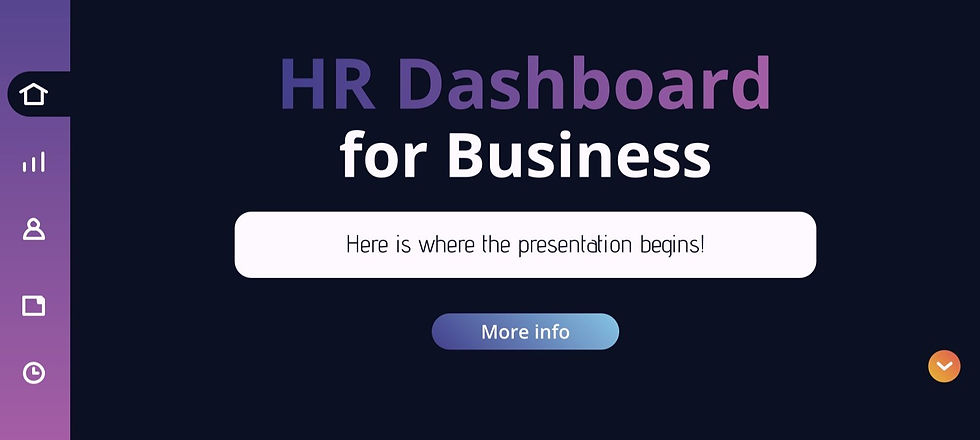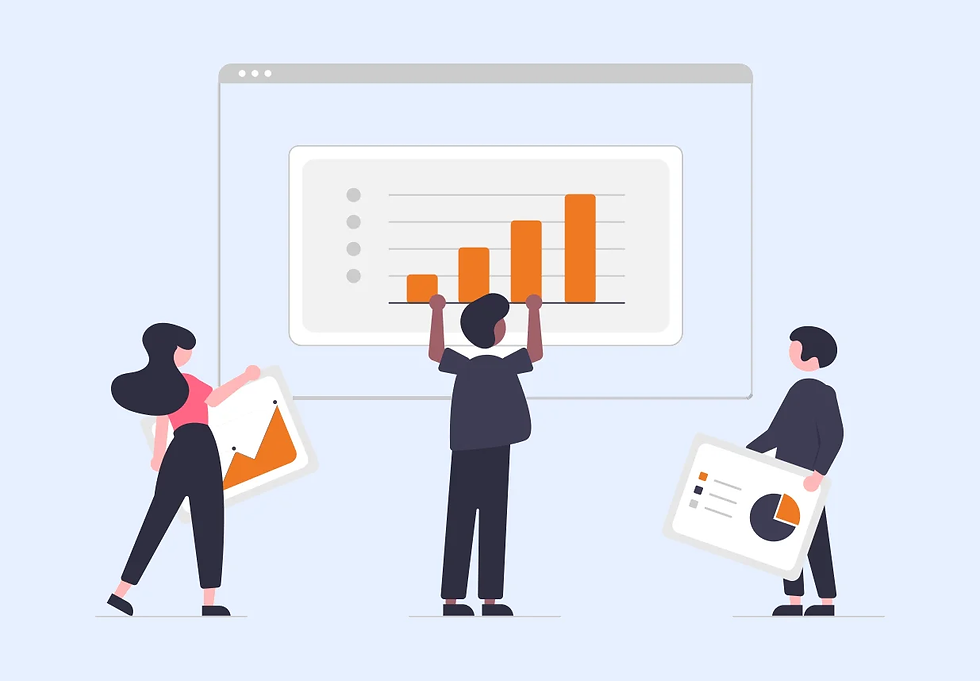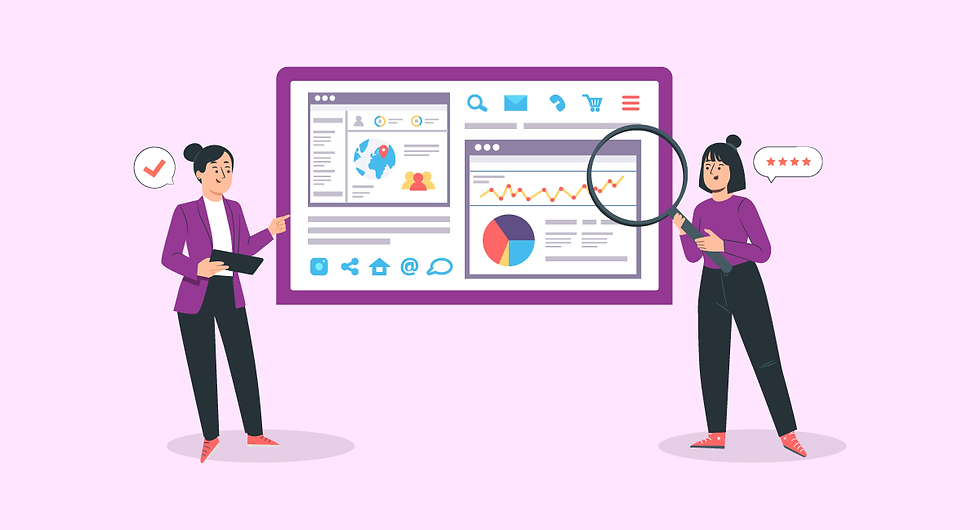Human Resource Dashboard: Revolutionizing Workforce Management and Decision-making
- sachin pinto
- Jun 30, 2023
- 4 min read
In today's rapidly evolving business landscape, human resource management plays a pivotal role in an organization's success. As companies strive for increased efficiency and productivity, data-driven decision-making has emerged as a powerful tool to optimize workforce management.
The Human Resource Dashboard is a comprehensive and user-friendly visual representation of key HR metrics and performance indicators.

This article explores the significance of HR dashboards, their benefits, essential components, design principles, and practical examples to demonstrate their effectiveness in shaping strategic HR decisions. By integrating data analytics and visualization, the Human Resource Dashboard empowers HR professionals to make informed choices, align workforce strategies with organizational goals, and enhance overall business performance.
In the modern era of data-driven business practices, HR departments have begun harnessing the power of technology to optimize their operations. The Human Resource Dashboard is a powerful solution that amalgamates HR data from various sources into a single, easy-to-understand interface. By providing real-time insights, HR dashboards enable organizations to make data-backed decisions and foster a productive and engaged workforce. This article delves into the concept and significance of HR dashboards, shedding light on how they revolutionize workforce management.
Importance of HR Dashboards
HR Dashboards holds immense significance in modern human resource management due to their ability to transform raw data into actionable insights. By consolidating data from various HR processes, such as recruitment, employee performance, training, and retention, HR dashboards offer a comprehensive overview of the workforce's health and performance.

The importance of HR dashboards can be summarized as follows:
Informed Decision-Making: HR dashboards provide real-time and accurate data visualizations, enabling HR professionals and organizational leaders to make informed decisions promptly. By identifying trends and patterns, HR dashboards facilitate proactive measures to address challenges and capitalize on opportunities.
Enhanced Transparency: Dashboards promote transparency within the organization by sharing relevant HR metrics with employees. Transparent access to performance data and key HR KPIs fosters a culture of accountability and motivates employees to align their efforts with organizational objectives.
Strategic Workforce Planning: By tracking and analyzing workforce data, HR dashboards empower organizations to engage in strategic workforce planning. This includes predicting future talent needs, succession planning, and understanding skill gaps, ensuring a talent pool aligned with future business requirements.
Performance Management: HR dashboards provide comprehensive insights into employee performance, enabling HR professionals to track individual and team achievements, identify top performers, and address performance issues promptly.
Talent Retention and Engagement: By monitoring employee engagement levels and attrition rates, HR dashboards help identify factors affecting employee satisfaction. This allows HR teams to implement targeted retention strategies and improve the overall employee experience.
Compliance and Risk Management: HR dashboards play a crucial role in ensuring compliance with labor laws, regulations, and internal policies. By monitoring HR data and highlighting potential risks, dashboards contribute to minimizing legal and operational liabilities.
Benefits of HR Dashboards

HR dashboards offer a wide array of benefits that enhance the efficiency and effectiveness of human resource management practices. The key advantages of HR dashboards can be summarized as follows:
Real-time Data Insights: HR dashboards provide up-to-date and real-time visualizations of HR metrics and KPIs. This enables HR professionals and decision-makers to access the latest information on employee performance, engagement, turnover rates, and other critical HR indicators.
Data-Driven Decision-Making: By presenting data in a clear and concise manner, HR dashboards facilitate data-driven decision-making. HR teams can identify trends, patterns, and correlations, leading to better-informed choices in recruitment, training, performance management, and talent retention.
Improved HR Efficiency: Dashboards streamline HR processes by centralizing and automating data collection, analysis, and reporting. This reduces manual efforts, eliminates data silos, and optimizes HR operations, resulting in enhanced overall efficiency.
Enhanced Employee Engagement: HR dashboards allow HR professionals to monitor employee engagement levels and identify potential areas for improvement. Addressing engagement issues promptly contributes to a more motivated and productive workforce.
Strategic Workforce Planning: By analyzing workforce data, HR dashboards support strategic workforce planning. Organizations can identify skill gaps, anticipate talent needs, and align HR strategies with long-term business objectives.
Better Compliance and Risk Management: HR dashboards aid in ensuring compliance with labor laws, regulations, and internal policies. By tracking compliance metrics and highlighting potential risks, organizations can mitigate legal and operational liabilities.
Customization and Flexibility: HR dashboards are highly customizable, allowing organizations to tailor them to their specific needs and preferences. HR professionals can choose the most relevant metrics and visualization styles, ensuring that the dashboard aligns with their unique requirements.
The essential components of an HR dashboard include:
Key Performance Indicators (KPIs): The core HR metrics that measure employee performance, engagement, and other critical HR aspects.
Data Sources: The various HR systems and databases from which data is collected and integrated into the dashboard.
Data Visualization: The visual representation of HR data using charts, graphs, and other graphical elements for easy comprehension.
User Interactivity: Interactive features that allow users to filter, drill down, and explore specific HR data points for deeper analysis.
Alerts and Notifications: Automatic alerts for critical HR events or deviations from predefined benchmarks.
Challenges and Mitigation:
Challenges in implementing HR dashboards include data quality issues, data security concerns, and ensuring user adoption. To mitigate these challenges, organizations can focus on data cleansing and validation processes, implementing robust data security measures, and providing training and support to users. Regular audits of data sources and adherence to data governance policies also help ensure data accuracy and integrity.
Additionally, involving key stakeholders in the dashboard design process fosters greater acceptance and usability, promoting successful adoption across the organization.
Future Trends of HR Dashboards:

The future trends of HR dashboards are likely to revolve around advanced analytics, artificial intelligence (AI), and increased mobile accessibility. AI-driven analytics will enable predictive modeling and more sophisticated data insights, supporting proactive HR decision-making. Integration of natural language processing (NLP) will enable voice-activated interactions with dashboards, enhancing user experience.
Furthermore, mobile-responsive and app-based HR dashboards will cater to the growing remote workforce, providing real-time access to HR data on smartphones and tablets. As technology continues to evolve, HR dashboards will become more intelligent, user-friendly, and instrumental in shaping strategic HR initiatives.
Conclusion :
The Human Resource Dashboard is a game-changing tool that empowers HR professionals to make well-informed decisions and optimize workforce management. By embracing data-driven practices and leveraging the power of visualization, organizations can foster a more engaged and productive workforce, driving long-term success.
DOWNLOAD THE FREE HR DASHBOARD SLIDE




Comments